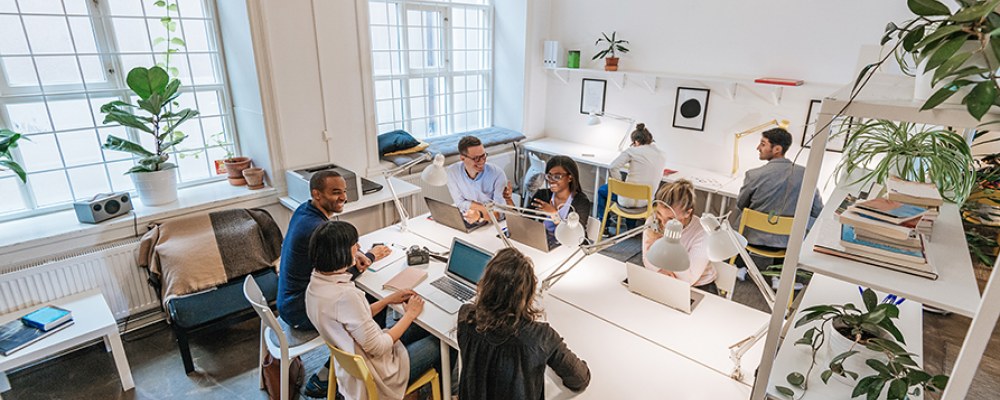
What is LinkedIn and what can you use it for?
LinkedIn is not only an electronic CV but much more! It's your business card and contacts in the same package. It's a professional’s social media channel in networking and job seeking.
Tool to present yourself as a professional – Advertise yourself and highlight your strengths
LinkedIn is a platform to present your professionalism and a tool to advertise yourself. On your LinkedIn profile, you can highlight your strengths: your experience, expertise, motivation and interests.
LinkedIn is also a channel to express your own valuable views. You can write a post in which you share information or comment on some topical issues.
The information you share can originate from you or someone else (just remember to mention the source). You can share a link, for example, to an article or material, somebody’s speech or opinion letter. When you share this kind of information, you tell your network what you consider important in your line of business and what you regard as central and topical issues in your field.
In addition to information, you can also bring up views which are based on your experience or studies, form the big picture of some topical theme or comment an ongoing debate. Make sure you are noticed and think carefully what topics you want to be associated with when active professionals are searching for information and views.
Channel to look for information – Find information, learn about your choices and plan your future
The best things about LinkedIn is its versatile and topical content. LinkedIn’s most obvious purpose is to find jobs and experts. Many employers and especially headhunters and consults are there daily looking for suitable candidates for various positions.
LinkedIn is also an excellent tool to get information regarding your own choices and to plan your future. Look at other profiles: what are people doing, in what kind of companies are they working, what kind of job opportunities do they have? Do some research and get inspired! Learn from the profiles of your fellow experts and exploit the best practices.
LinkedIn is also an excellent tool to get information regarding your own choices and to plan your future.
Your contacts’ updates can be seen on your LinkedIn front page. You get more useful information into your feed by following the companies and LinkedIn groups that you find interesting. So, use LinkedIn to familiarise yourself with the topics you are interested in and get to know movers and shakers as well as decision-makers in your profession. When you follow those experts and discuss with them, you’ll have a chance to learn something new every day.
Networking platform – Build, maintain and use your network
A wide network helps you to find a job. Expand your network and invite your colleagues, your boss, former and current school friends and fellow students, people from your hobbies, your family members and your social media network to LinkedIn.
When you associate with new people, you can get to know them through LinkedIn. Find their profile and invite to connect. Favour unique messages and avoid the most usual ”I’d like to connect with you on LinkedIn”. With just a little effort you can make recipients feel they are special and you strengthen the connection between you. You can, for instance, tell where you have met. If you don’t know each other, explain why you would like to network. You can ask in what business you could ask for their help.
For example, you can write:
"Hello and thank you for the invitation to connect. If you had to name one thing in which I could ask for your help, what would it be? My special areas are: 1) LinkedIn and Social selling; 2) Sales and sales development."
Would you like to talk with an employee from an interesting company? LinkedIn is an excellent channel to approach people professionally. You can send a connection request to a person you don’t know and drop a line, telling them you appreciate their work and welcome advice how you could find a way to a similar position. It may be that the person never replies but at best your approach can initiate a fascinating conversation and you get interesting information from the expert!
Have you found a job of your dreams but don’t know anyone from the company? With LinkedIn you can work out a connection between the company workers and your own contacts. Write the company’s name into the search bar and find their employees. LinkedIn will tell you how many contacts there are between you and your future colleague. Networking is important because you will be noticed more likely in the recruiting process if you know someone within the company.
Active networkers update their LinkedIn profile more often than their business cards. Bear in mind that today, in professional working life, applicants are evaluated not only by their experience and education but also by their networks. The more the employee is expected to work with customers and interest groups, the more valuable the networks become.
Things that affect your visibility on LinkedIn:
- Your activity: comment, discuss, praise and give thanks.
- The size and quality of your network.
- Your profile: fill your profile as comprehensively as possible and use apt key words.
This article is part of a LinkedIn training series written by TEK's career coaches. Read more on the basics of a LinkedIn profile, LinkedIn as a search engine, improving search results, how to become active on LinkedIn and the use of different features.